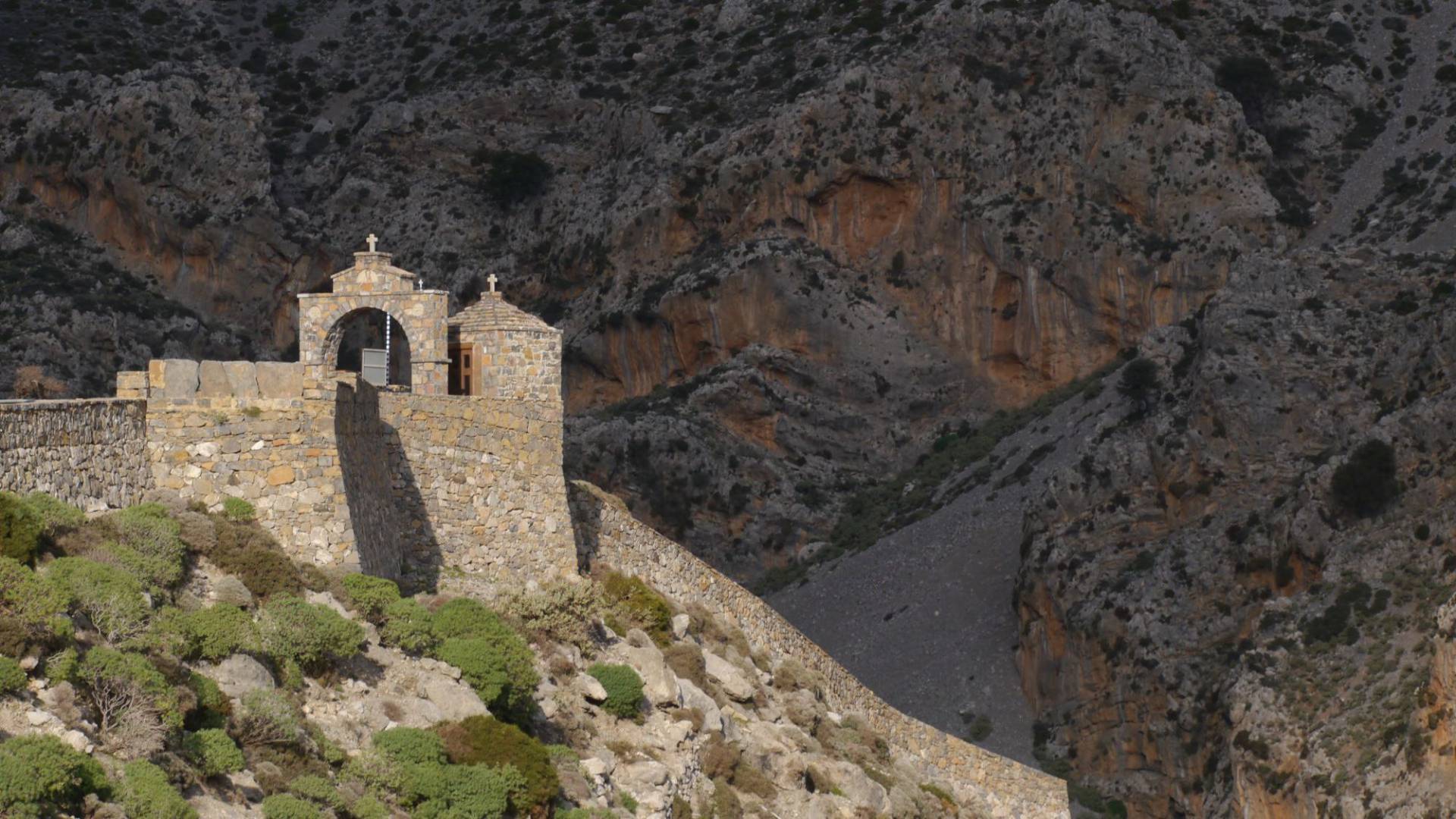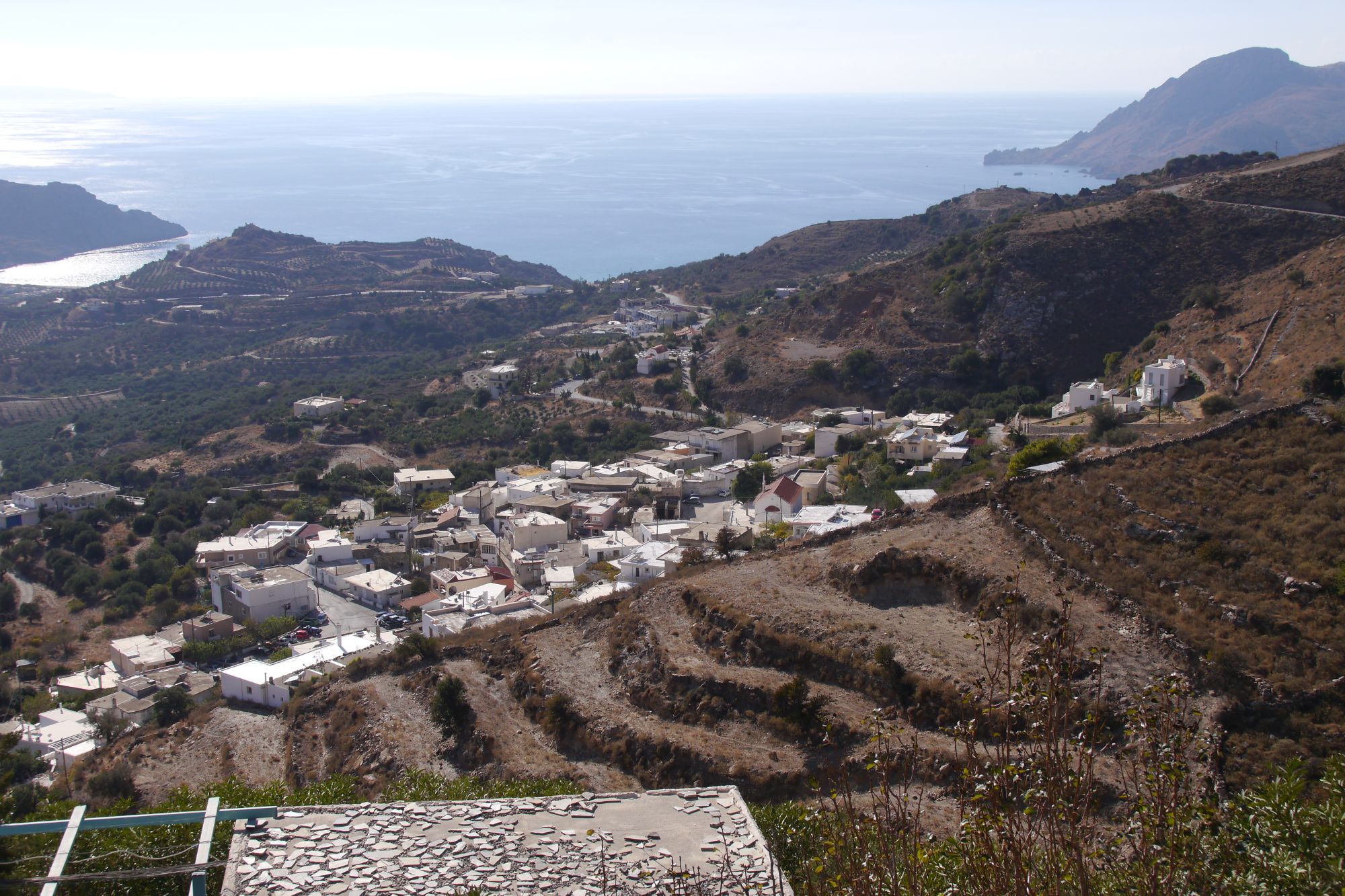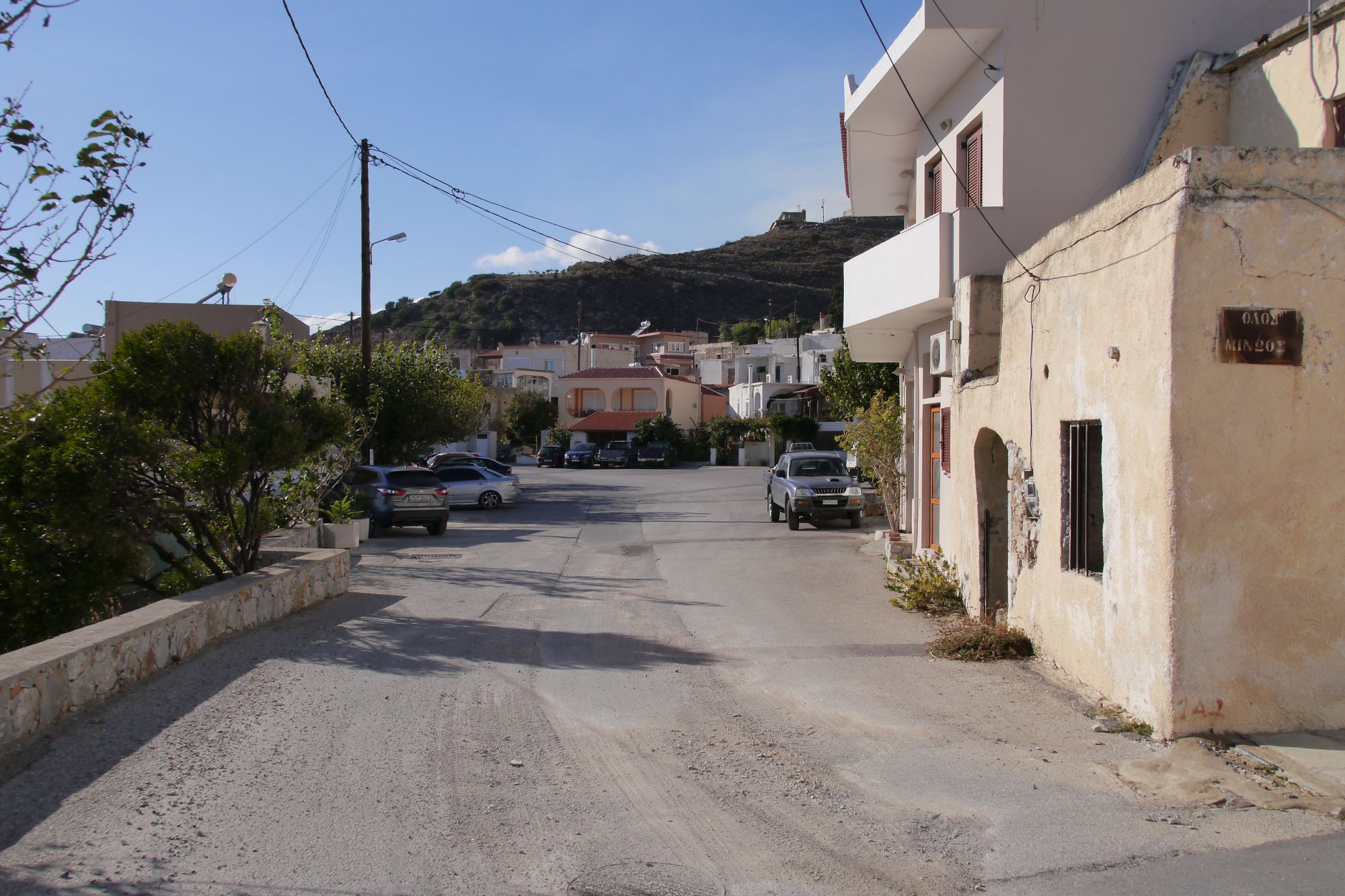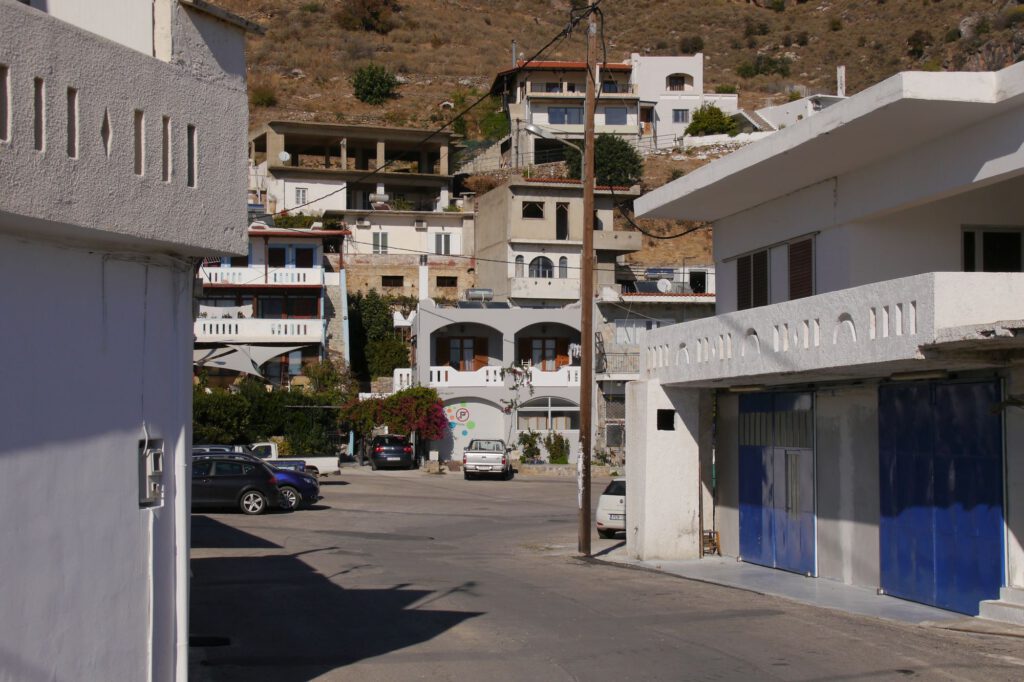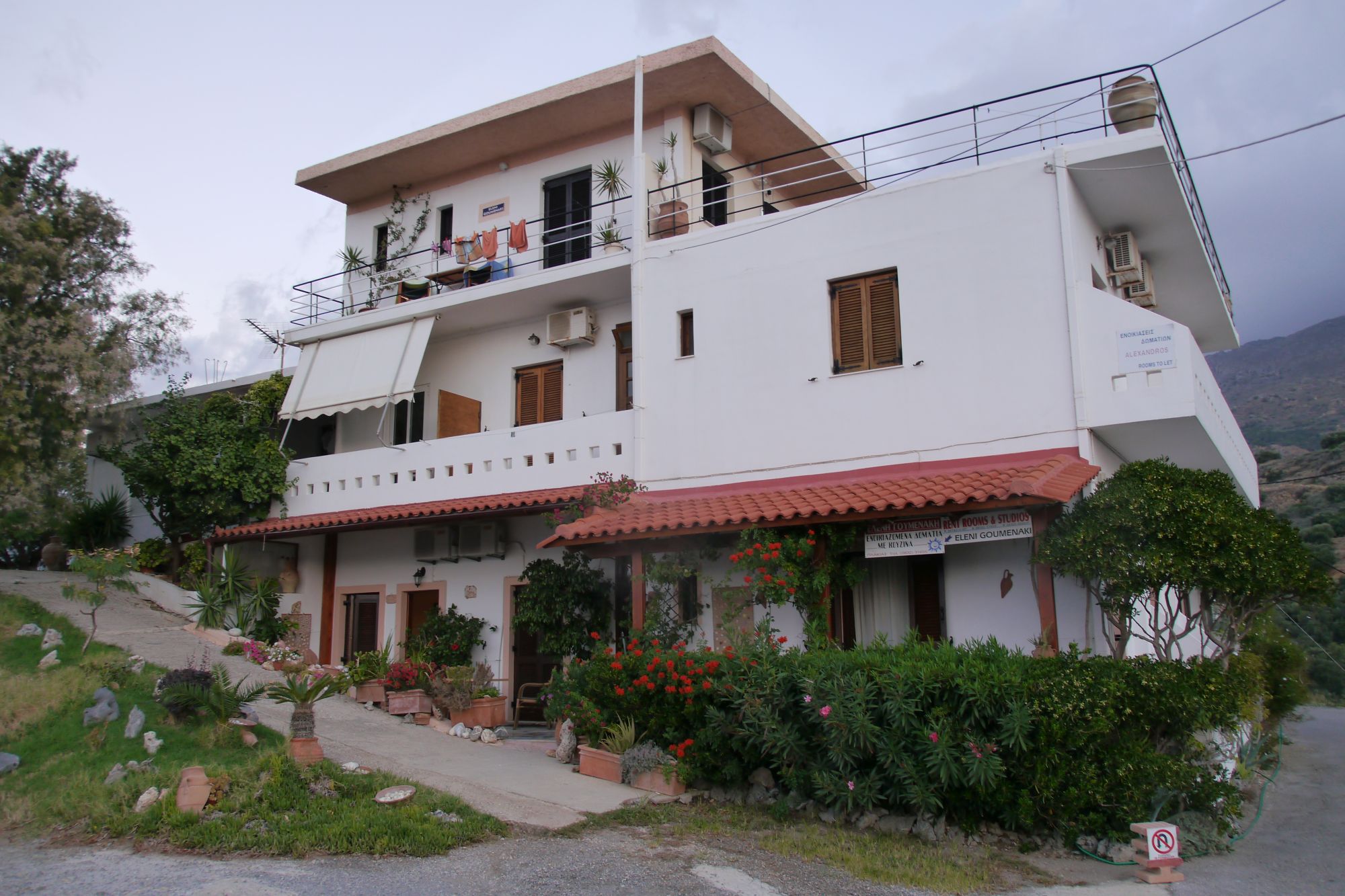The local community of Mariou of the Finikas municipality is located on the southern foothills of Kouroupa mountain (894m) and overlooks the Libyan Sea with a partial view of Plakias and Damnoni Bay. It is about 32 km from Rethimnon, lies at an altitude of 160 – 200 m and is home to a total of 339 inhabitants according to the 2011 census. It now includes the settlements of Mariou (303 inhabitants), Damnoni (11 inhabitants) and Palaia Taverna (25 inhabitants). Regarding Damnoni, it should be mentioned that the area also belongs in part to Mirthios and Lefkogia.
Naming
Local tradition traces the name of the village to a ruler named Mary, and thus comes from the baptismal name of a woman. Another popular tradition speaks of a shepherdess, or perhaps even an important ruler, named “Marion”; it is generally believed that she and the inhabitants of the village came from Sfakia, from the settlement of Kappari – and the shepherdess in question is said to have had many siblings. When they visited her, they always said “Let’s go to Mariou!”. From this phrase – so it is said – the name of the village is said to have originated.
There is a traditional song for the said Mario:
That she was a shepherdess, a great landowner
and came to our country from the region of Sfakio.
Mary, look at her, the one who was born,
but her many brothers and sisters called her Margio,
as if they often came to the chapel from Sfakio.
Mario, because she was the spoiled one for them.
her mother’s only precious daughter.
Elements of village history

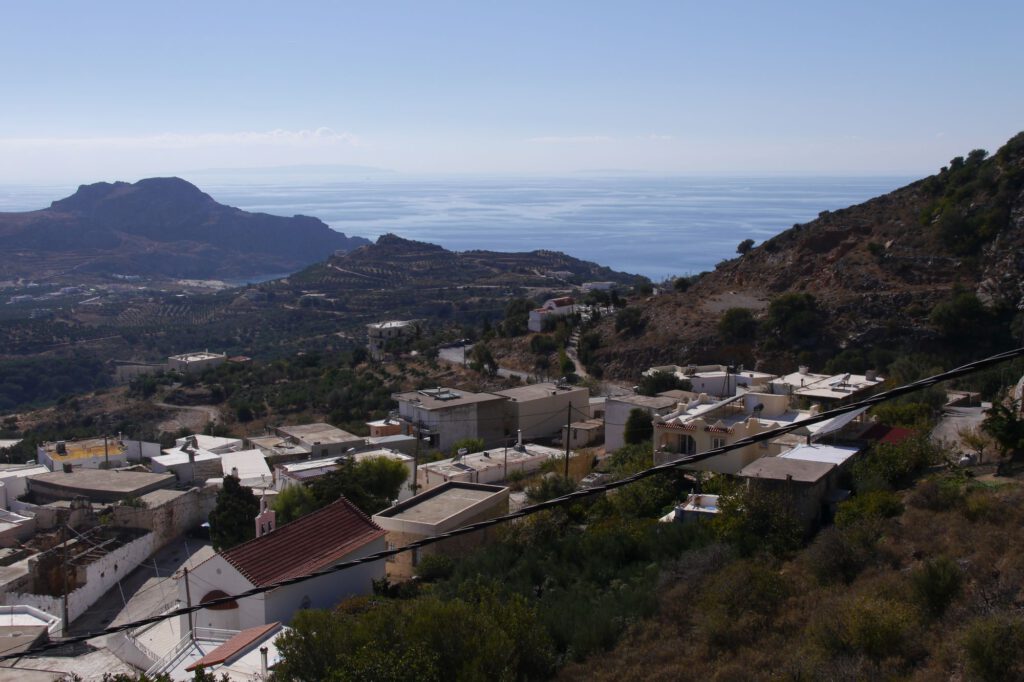
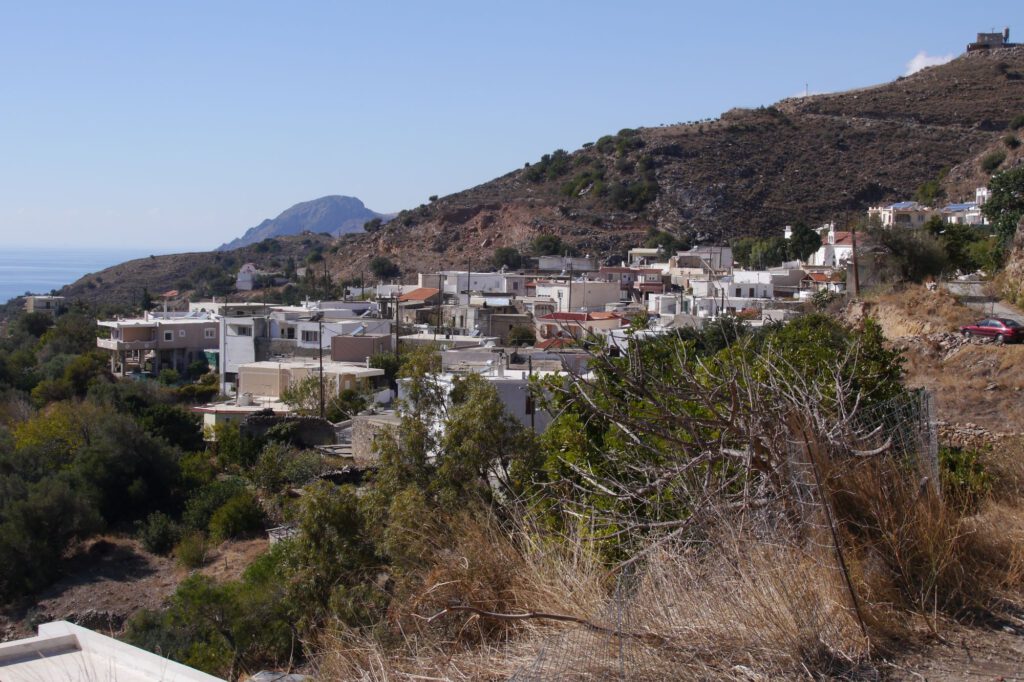
The village is located high up on the mountain, 4 km from the beaches of Plakias and Damnoni, and ten km from the historic monastery of Preveli. It has rich natural beauty, with an uninterrupted view of the Libyan Sea. Thus, in the old days, it was possible to observe the movements of all enemy ships and threats.
There is no precise information about when the village was built. Outside the village, at a distance of 500m, there is a place called “Maches” (“μαχές”), probably called so because many battles took place there. It is known that the place is called “Sarakina” (“Σαρακίνα”) because of the death of a Saracen.
Most of the buildings in the village belonged to the Preveli monastery until the 1950s. They were eventually handed over to the municipality of Mariou, which indicates the great contribution that the Preveli Monastery made to the rise in the standard of living of the inhabitants of the area.
Until 1927, Mariou belonged to the municipality of Mirthios. Thus, by law, it became an independent municipality, including the above-mentioned settlements.
Venetian and Turkish censuses mention the now destroyed settlement of Nio Chorio. As late as 1928, three inhabitants are said to have lived there. In the 17th century a small monastery complex including outbuildings of the Preveli monastery was built on this site. However, it was left to the ravages of time without any care. Fortunately, however, the old church of the Holy Cross, the Catholic church of the monastery, has been preserved.
Mariou is mentioned by P. Barozzi in 1577, as Mariu, by Castrofilakas in 1583 as Mariú with 49 inhabitants and by Basilicata in 1630 as Mariú and by an Egyptian census in 1834 as Maria with 14 Christian families. In 1881, Mariú belonged to the municipality of Finikos and had 161 Christian inhabitants.
The topographical modern name Damnoni derives from Daphnonion (from dafnon) [δαφνώνιον (από το δαφνών)] and translates as laurel grove. It is from the latter that the Cretan terms Damnoni and Lamnoni derive.
The name Lamnoni, which is mentioned in literature at the same time, seems to indicate that there was also a relationship to the historical place Lamon.
Churches of the village
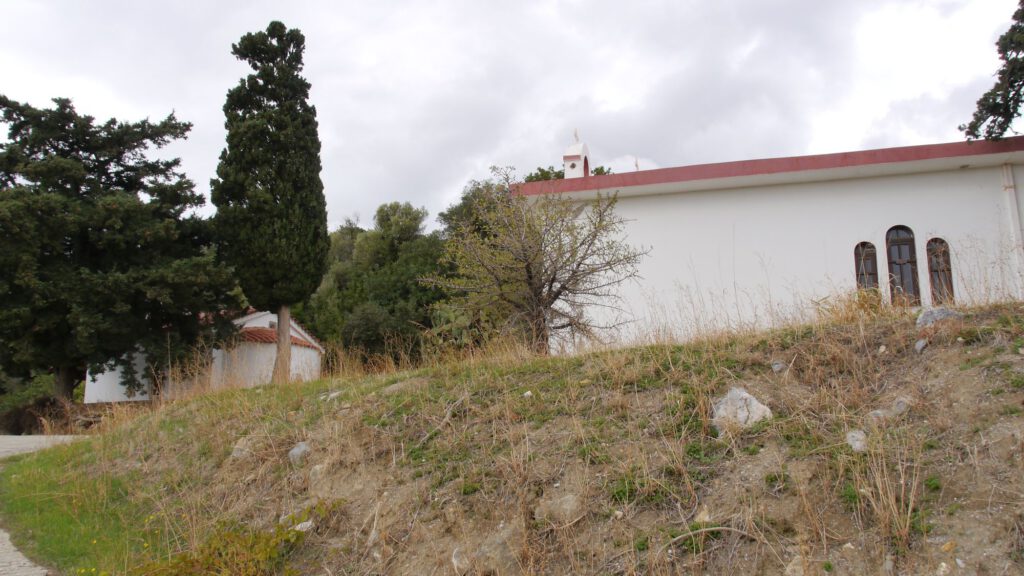
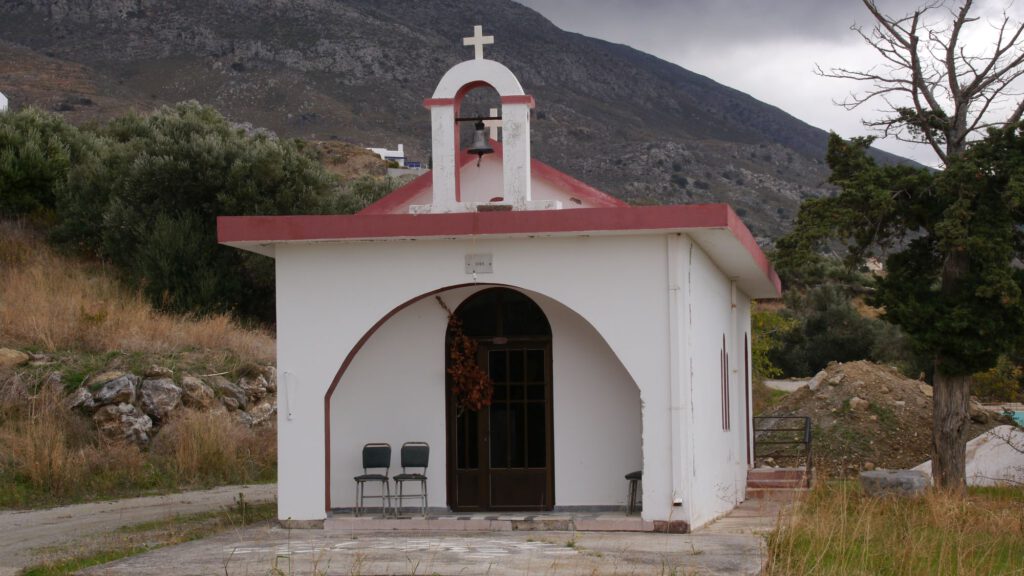
- The church of Timios Stavros, about 1.5 km from the village, between Mirthios and Mariou. As mentioned above, it belonged to a small monastery complex as part of the Preveli monastery. This place used to be called Nio Chorio. It lies on an irrigation ditch that runs along the slopes from Mirthios around Lefkogia almost to Shinaria beach.
- The Cathedral of the Holy Trinity of Mariou (καθεδρικός ναός της αγίας Τριάδος Μαριού) is a masterpiece, identical to that of the Metropolitan Cathedral of Rethimnon (1861).
- To the northwest of the village, not far away, is the small chapel of Saint Onoufrios (in memory of 11 February) (Άγιος Ονουφρίος). Built into the rock and harmoniously integrated into its surroundings, it peacefully overlooks the stormy Libyan sea.
- At the eastern entrance to the village are the temples of Hypapanti (ναΰδρια της Υπαπαντής, a cave temple). It was built under Turkish rule.
- Also to the east of the village, the Temple of Saint Anthony (Άγiος Αντώνιος), also a cave church, with abundant and good water, which today irrigates the village, while in the past it was also used to irrigate the village’s orchards.
- he Church of St. Blasius, (Άγιος Βλασίος) built in 1912 by the monk-priest Ioannikiou.
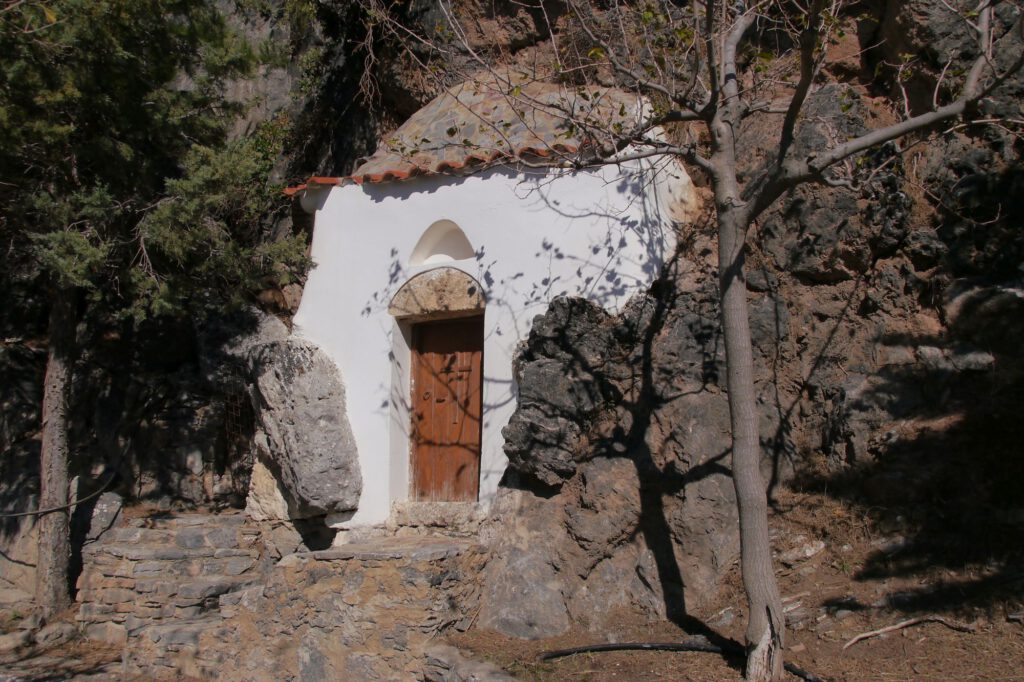
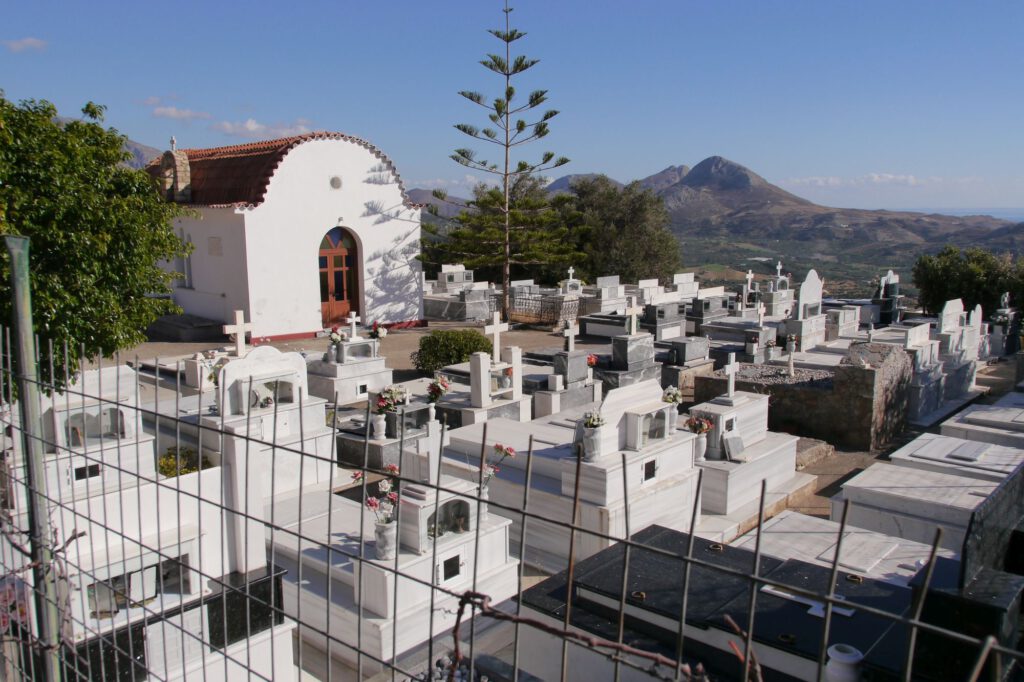
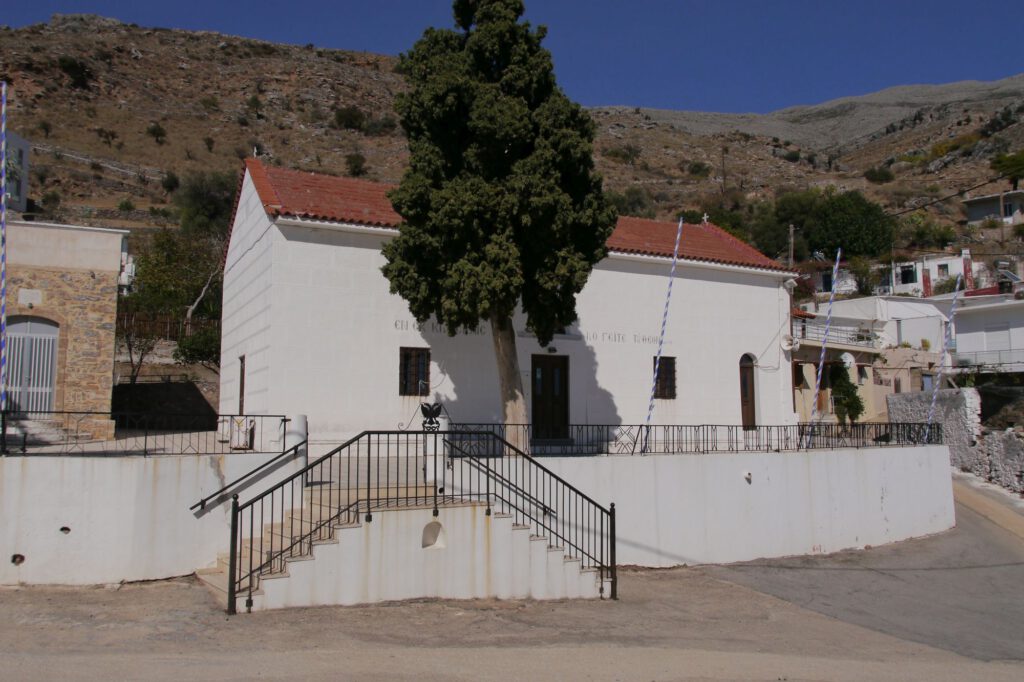
The parish centre “Saint Cosmas the Aetolian” (“Ο Άγιος Κοσµάς ο Αιτωλός”) is a spiritual jewel of the village and the wider region. It strives to maintain the customs and traditions of the village, its cultural and social life, and to provide information on various topics of contemporary church and community life.
During the Ottoman rule, it was customary to protect themselves from the looting of their wealth by the Turks by handing it over to the monasteries. At the place called Kalimvatis, about 1.5 km from the village, there is a still unexplored cave of which it is said that the inhabitants hid their wealth there and also the valuable iconostasis of the Agia Triada church.
Schools
Since the beginning of the 20th century, there was a school in Mariou, namely a grammar school, which was dissolved in 1900 and converted into a secondary school in 1909. A state (primary) school in Mariou was built in 1924. The last year of school operation was 1996-97 when, from the following school year (1997-98), the six-form entry primary school of Plakias was opened to accommodate pupils from Mariou and the other neighbouring villages (Myrthios, Asomatos, Gianniou, Lefkogia and Sellia).
Culture – Activities of the inhabitants – products of the village
The Marians are hospitable, progressive and very proud of their Sfakian origins. They have lived in their land for centuries, reverently following the poet’s admonition:
Marriage: The village bubbles with joy and laughter and sings the wedding song far and wide
Death: “All are sad, and from the dark belfry our bell pushes into the air.”
Mariou also has a cultural and recreational association that is very active in the village.
The inhabitants are engaged in cattle breeding and agriculture and recently also in tourism.
The village’s main products are oil, livestock, fruit and vegetables, and carob.
Archaeology
In an area 1500 m. east of the settlement, at the foot of Kouroupa, there are remains of mixed isolated houses.
Sources
- Village description on the Official site of the municipality of Agios Vasilios.
- Villages of the district of Agios Vasilios Rethymnon; Volume D (4) of the edition of the international scientific conference on the former province of Agios Vasileios; Rethymnon 2011, Anna Manousaki-Karpreta – Mariou – p. 405

























